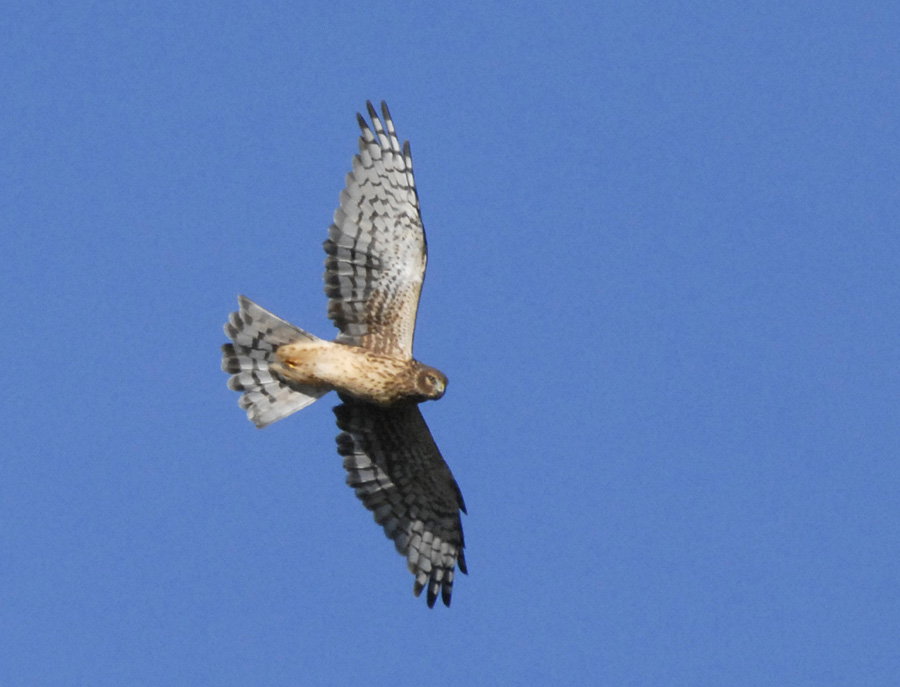Everyone with a love of nature and the outdoors should know that the purchase of a Stamp is something that will benefit more than ducks. Many kinds of shorebirds, long-legged waders and wetland and grassland songbirds rely on habitat derived from Stamp purchases. Northern Harrier is just one of the non-waterfowl species that benefits from Stamp investment.

This impressive raptor is often found hunting low over marshes and open fields. Formerly called “Marsh Hawk,” the Northern Harrier will prey on ground rodents and also some birds. Even from a distance, its identity can be obvious, what with its proportionally long tail and its wings held above the horizontal in an open “V” with its body tilting from side to side in flight. This is one of the few raptors where the sexes look different: the male is white below with a light gray back and hood and black wingtips, the female – shown here – is mottled in browns. Both sexes have distinctive white rumps.
Northern Harriers almost always perch on a low post or snag close to the ground. This species even nests on the ground, usually in tall weedy growth.
In the past, this raptor suffered from extensive drainage of marshes – and from thoughtless persecution – but this species survived better than most birds of prey.
Northern Harriers actually breed across the Northern Hemisphere, including most of Eurasia from the Arctic Circle south to southern Europe and east to Siberia. In North America, it breeds across the continent, from Alaska to Labrador and south to most of the northern contiguous states, south even to Nevada and Kansas. The species winters across most of the lower 48 states. It will also range in winter to the northern West Indies and Colombia.
Refuges and WPAs are important for Northern Harriers, especially when considering the presence of expansive marshes and grasslands in the Refuge System.